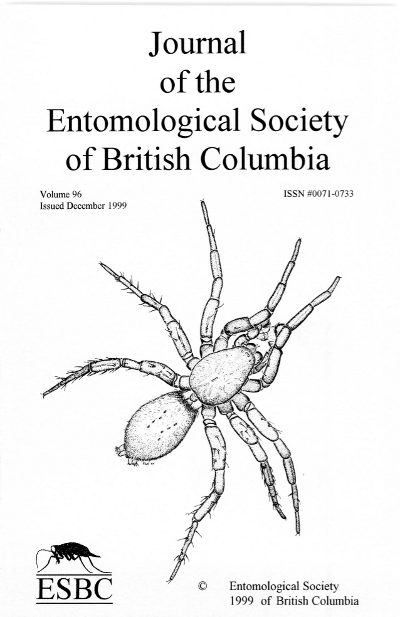Exclusion fences reduce colonization of carrots by the carrot rust fly, Psila rosae (Diptera: Psilidae)
Abstract
The effectiveness of exclusion fences in preventing the colonization of carrot plantings by the carrot rust fly, Psila rosae (F.), was tested in small field plots. Fenced enclosures were surrounded by panels of mesh nylon window screen l20cm high. Control enclosures were left unfenced. Although the number of first generation P. rosae adults captured on yellow sticky traps was not significantly different between control and fenced enclosures, the number of second generation adults emerging within enclosures was significantly higher in control enclosures than in fenced enclosures. The percentage of unmarketable carrots, % damaged carrots, % urunarketable yield, % damaged yield, and number of lesions per carrot were all significantly higher in control enclosures than in fenced enclosures. We conclude that exclusion fences impede the colonization of carrot plantings by P. rosae and reduce damage to carrots. The results are discussed as they relate to pest management methods for thc carrot rust fly.
Key words: Psila rosae; carrot rust fly; physical control; exclusion fences
Downloads
Issue
Section
License
Authors who publish with the Journal of the Entomological Society of British Columbia agree to the following terms:
-Authors retain copyright and grant the journal right of first publication with the work simultaneously licensed under a Creative Commons Attribution License that allows others to share the work with an acknowledgement of the work's authorship and initial publication in this journal.
-Authors are able to enter into separate, additional contractual arrangements for the non-exclusive distribution of the journal's published version of the work (e.g., post it to an institutional repository or publish it in a book), with an acknowledgement of its initial publication in this journal.
-Authors are permitted and encouraged to post their work online (e.g., in institutional repositories or on their website) prior to and during the submission process, as it can lead to productive exchanges, as well as earlier and greater citation of published work (See The Effect of Open Access).


